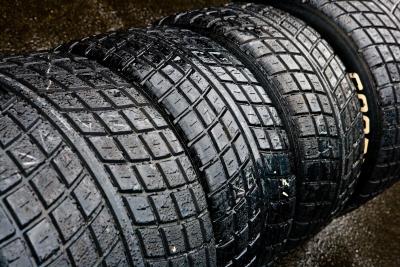
Tires come in many different varieties, including all-weather and all-terrain. The different treads are better for driving in certain conditions. Manufacturers are always coming up with ways to make the best tire to handle all conditions.
All-weather tires are specifically designed for driving on paved surfaces in any type of inclement weather, from a drizzle to a downpour to snow. The manufacturer fuses summer and winter treads together to make a tire to handle any conditions a season can throw at it. Because rain treads can't handle snow, and vice versa, all-weather tires are neither high-performance rain tires nor high-performance snow tires.
SUVs and small trucks often come equipped with all-terrain tires, which are made for riding on different types of surfaces, including pavement, dirt and rocks. These tires create traction on surfaces that do not offer much traction of their own. They also come with stiffer sidewalls and better puncture resistance than most tires. The treads are built primarily for pavement use but offer the ability to travel off the road if necessary.
According to Jim Walczak of About.com, tire manufacturers assign their own grades for tread wear, traction and temperature, so the numbers vary from brand to brand.
You want the ideal tires for your particular driving habits. If you are looking to drive on to the beach or in the desert, you should know that all-weather tires do not perform as well as all-terrain tires on sand.
The best way to choose the correct tire is to talk to a professional at your local tire store and explain the type of driving you plan to be doing.